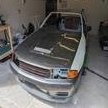True Anti-lag And Turbo Life-span
Announcements
-
Similar Content
-
Latest Posts
-
Not the headlight. It's the DRL that serves double duty as white and amber. Would be the easiest way to make it happen, if fitting a BCM was in any way an easy thing. Otherwise you'd do it with some relay logic and/or maybe some diodes.
-
Would require a very smart body control module which these cars are about 20 years to old to have
-
Sounds like using one of those configs modern cars use where they turn off the whole headlight these days on the side that the indicator is flashing on.
-
Change the pump... Or you'll likely regreg it in 12 months time if it's clunky...
-





Recommended Posts
Create an account or sign in to comment
You need to be a member in order to leave a comment
Create an account
Sign up for a new account in our community. It's easy!
Register a new accountSign in
Already have an account? Sign in here.
Sign In Now